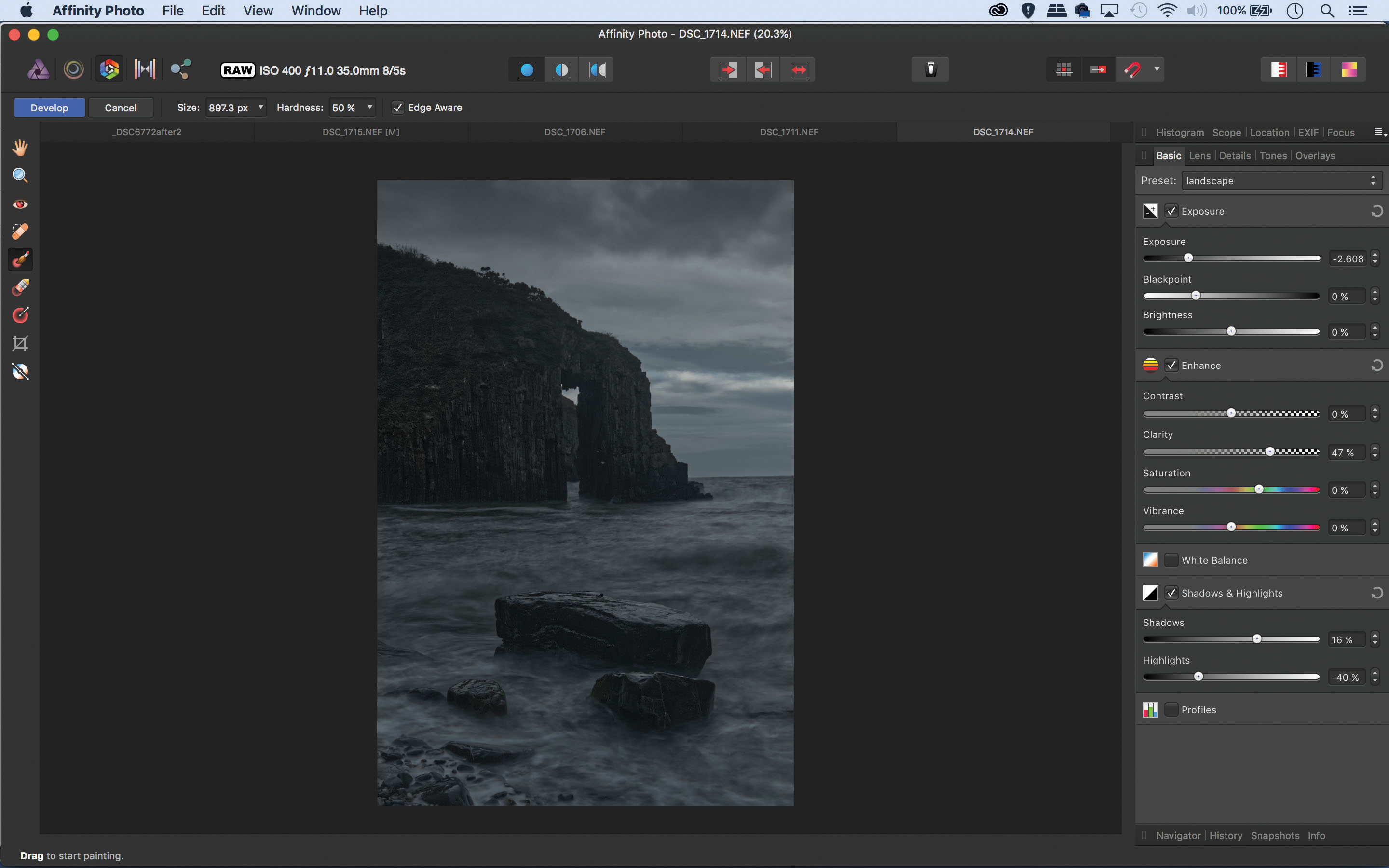

With Affinity Photo however, you must first process them in the Develop “Persona” (the term Serif uses to describe these application modules) after which they move to the Photo Persona at which point you can edit them at a pixel level, and also continue to apply non-destructive filters and adjustment layers just as you can in Photoshop. Because they stand alone, images can be exported to their final destination directly from these develop modules without having to bring them into Photoshop at all. In the Adobe camp, Lightroom and Camera Raw are separate applications from Photoshop, which is not necessarily a bad thing. Unlike Adobe Photoshop, Affinity Photo integrates a development module and a pixel editor all in one application. So, given my hectic shelter-in-place/work from home schedule, I thought I’d give Affinity Photo a try.

Serif is running a Covid19 special…an extended 90-day trial and 50% off purchase afterwards. One of those players is Serif, with their suite of applications which includes Affinity Photo. But a few new players have arrived on the scene, and they could potentially unseat the champion. Still, they are a necessary staple in any photographic workflow. Their performance and usability has slowly diminished over the years as they continue to dominate the market. Working with Adobe products has been a love/hate relationship for quite some time now.

Curves, White Balance, Shadows-Highlights, Saturation, Vibrance, Noise Reduction, and more) effect the overall look, feel, and tone of your image.ĭon’t forget to subscribe to my channel and like this video if you enjoy it or learn something from it.Having been an avid Photoshop user since version 2.5, I thought I’d try something a little different. By the end of this tutorial, you should have a firm understanding of how each panel in the Develop Persona works, and how certain edits (i.e. I walk through each step in the RAW photo editing process in a way that’s easy for beginner photo editors to understand. By editing RAW files, you’ll get amazing looking images that contain less noise and have more balanced lighting.

You can edit a variety of supported RAW image formats, which are better than JPEG because they come out of the camera with almost no compression and therefor can recover much more data from your image. In this Affinity Photo tutorial for beginners, I show you how to edit RAW photos from start to finish using the Develop Persona – which is the “workspace” Affinity Photo uses for developing or editing RAW images. How to Edit RAW Photos in Affinity Photo | Develop Persona for Beginners


 0 kommentar(er)
0 kommentar(er)
